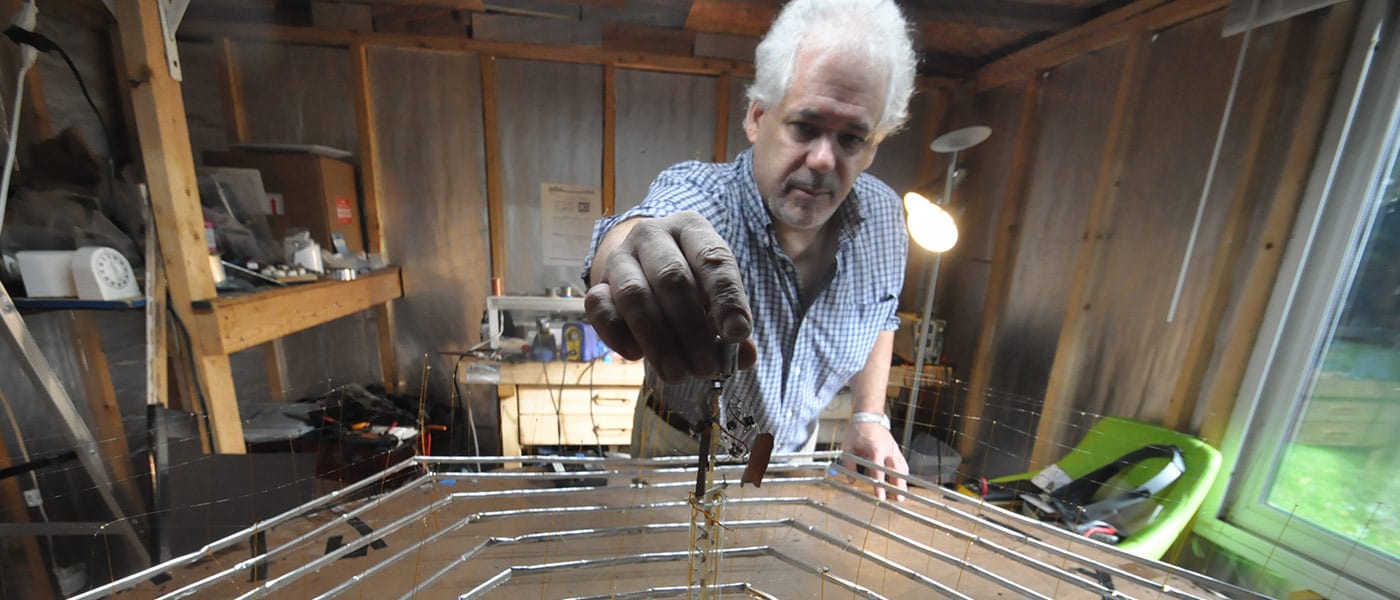
E than Krauss has a patented Self-Contained Ion Powered Aircraft (US 10,119,527). The device has no moving parts and is able to carry its power supply onboard. It is also relatively efficient and flies for several minutes.
The patent was originally filed in 2014 and specifically covers ion propelled vehicles that carry their own power supply. The flight time with an onboard power source has been increased from a few seconds in 2006 to over 2 minutes in 2018. Currently, there are commercially available solar panels that would allow the device to fly all day.
Krauss’s craft falls into a completely different category of flight than a helicopter, or airplane. Ethan has built several steering systems for his flying machine, that had enabled it to lift off and fly horizontally as well as vertically.
It is really an old, but little-known form of propulsion system that has been greatly increased in efficiency, beyond what people believed was possible. This improved form of propulsion can be applied to any type of flight.
Also, it has been designed to produce virtually no ozone, only some negative ions, so that it is an environmentally friendly form of flight. Since it is virtually silent, it is likely to be a better choice of propulsion for lightweight flying machines.
The inventor has demonstrated this device to GLIDE (Great Lakes Innovation and Development Enterprise) in Ohio, which is an incubation hub for entrepreneurs.
Ethan’s invention is capable of carrying a small propellant tank, therefore in theory, it just might be able to operate at a considerable altitude or in space, with some other technical modifications.
While Ethan is not claiming that his device is anything like a spacecraft, it is interesting to note that his ion propelled device can accelerate at 10 m/s2 or more, vs. state of the art space-based ion propulsion, which accelerates at 0.00001 m/s2.
“Originally,” the inventor said, “almost everyone scoffed at the idea, especially those who thought they were trying the hardest to be helpful. Even when the device first lifted off with the power supply onboard, most people thought it would never go anywhere, and would go on saying “what is it good for?”
Most scientists and lay-people think that this technology is something that only will be practical only in the future. But Ohio inventor Ethan Krauss, who has a degree in Electrical Engineering from CSU, is close to making a commercially viable version of this technology.
He is optimistic and feels that this will take place sooner than most people expect. It is apparent that this type of propulsion is no longer science fiction, though it may initially be applied for lighter duty applications, the technology may well revolutionize the near future of flight.


